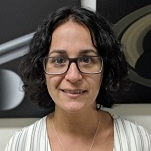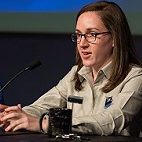Applications of GNSS Reflectometry for Earth Observation II
A special issue of Remote Sensing (ISSN 2072-4292). This special issue belongs to the section "Earth Observation Data".
Deadline for manuscript submissions: closed (30 June 2022) | Viewed by 53219
Special Issue Editors
Interests: bistatic radar; GNSS-R; freeze/thaw; vegetation characterization; sea ice; wetlands; urban/agricultural flooding
Special Issues, Collections and Topics in MDPI journals
Interests: atmospheric & hydrologic science; geophysical remote sensing; passive microwave radiometry; GNSS-Reflectometry; inversion techniques; multi-sensor data assimilation
Special Issues, Collections and Topics in MDPI journals
Interests: GNSS-R; microwave radiometry; nano-satellites; CubeSats; soil moisture; sea-ice; artificial intelligence
Special Issues, Collections and Topics in MDPI journals
Special Issue Information
Dear Colleagues,
The availability of data from missions such as the CYclone Global Navigation Satellite System (CYGNSS) and TechDemoSat-1 (TDS-1) has had a significant impact on the scientific return of the Global Navigation Satellite System Reflectometry (GNSS-R) measurements. Data from these missions demonstrate the capabilities of GNSS-R and build on many applications that relate the properties of scattered GNSS signals to geophysical parameters. TDS-1 provides global data coverage, while the constellation of CYGNSS spacecraft, although limited to the tropics (±37° latitude), provides observations on rapid timescales with high spatial resolution. Equally important are measurements from airborne and ground-based instruments; these data enable investigations of the sensitivity of GNSS-R measurements to different phenomena and their use in new applications at a local/regional scale.
We invite authors to submit their work on applications that use GNSS-R data for Earth science to this second edition of our first Special Issue, “Applications of GNSS Reflectometry for Earth Observation”. As in the previous edition, we encourage the submission of works related to the synergistic use of GNSS-R data with data from other sensors at the same or different frequency of operations, enhancing spatial resolution and/or temporal sampling to improve estimates of geophysical parameters. Topics considered for this Special Issue should emphasize practical applications and reach beyond theoretical and model-based studies. Topics suggested include, but are not limited to:
- Ocean, land or cryosphere applications using GNSS-R;
- Applications using GNSS-R ground-based or airborne measurements;
- Applications using GNSS-R satellite measurements;
- GNSS-R-based neural networks for specific applications;
- GNSS-R-based classification algorithms for targeted applications;
- GNSS-R and SAR/Radiometer/Optical combined products;
- Downscaling or enhancement methods employing GNSS-R.
Dr. Nereida Rodriguez-Alvarez
Dr. Mary Morris
Dr. Joan Francesc Munoz-Martin
Guest Editors
Manuscript Submission Information
Manuscripts should be submitted online at www.mdpi.com by registering and logging in to this website. Once you are registered, click here to go to the submission form. Manuscripts can be submitted until the deadline. All submissions that pass pre-check are peer-reviewed. Accepted papers will be published continuously in the journal (as soon as accepted) and will be listed together on the special issue website. Research articles, review articles as well as short communications are invited. For planned papers, a title and short abstract (about 100 words) can be sent to the Editorial Office for announcement on this website.
Submitted manuscripts should not have been published previously, nor be under consideration for publication elsewhere (except conference proceedings papers). All manuscripts are thoroughly refereed through a single-blind peer-review process. A guide for authors and other relevant information for submission of manuscripts is available on the Instructions for Authors page. Remote Sensing is an international peer-reviewed open access semimonthly journal published by MDPI.
Please visit the Instructions for Authors page before submitting a manuscript. The Article Processing Charge (APC) for publication in this open access journal is 2700 CHF (Swiss Francs). Submitted papers should be well formatted and use good English. Authors may use MDPI's English editing service prior to publication or during author revisions.
Keywords
- GNSS-R
- Cryosphere
- Near-surface ocean wind vector
- Soil moisture
- Terrestrial hydrology
- Biomass
- Ship detection
- Oil slick detection
- Neural networks
- Classification
- Downscaling







